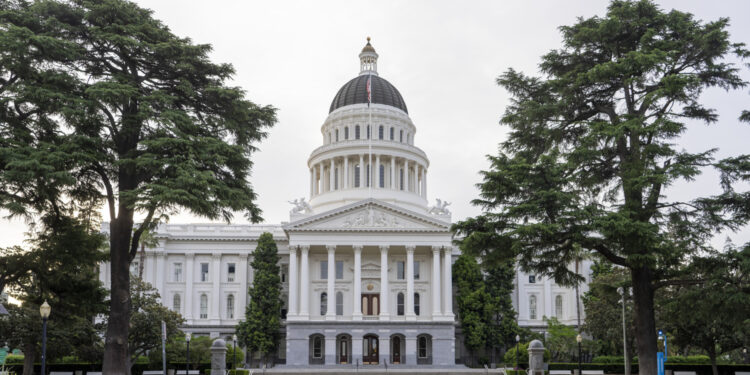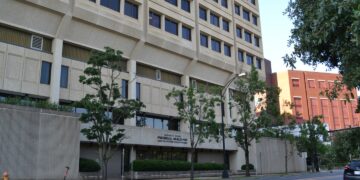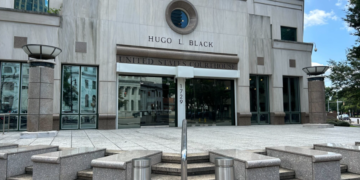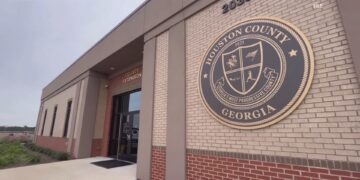August 22, 2025 Story by: Publisher
California approved a package of bills Thursday that establishes a November special election, where voters will decide on a new congressional map. Governor Gavin Newsom signed the bills into law, officially allowing Californians to determine whether lawmakers can redraw the state’s congressional districts.”
The move comes in direct response to a mid-decade redistricting initiative in Texas that is poised to add five GOP-leaning districts.
Prop 50: A temporary suspension of independent redistricting
California’s measure—known as Proposition 50 (Election Rigging Response Act)—would temporarily bypass the state’s independent Citizens Redistricting Commission. If approved, the new Democratic-favoring district lines would apply for elections in 2026, 2028, and 2030, reverting to nonpartisan map drawing after the 2030 census.
The chamber passed the constitutional amendment authorizing the maps by a 57-20 vote. The chamber passed the maps themselves and a bill funding the redistricting by similar margins, while the Senate passed each of the three measures with a 30–8 vote—all along party lines.
About the legislative package
- Assembly Constitutional Amendment 8 (Rivas, McGuire): allows Californians the ability to adopt a new, temporary Congressional map that neutralizes Trump’s power grab only if Texas, Florida, Indiana, or any other Republican-led state redraw their maps.
- Senate Bill 280 (Cervantes, Pellerin): establishes timelines and procedures to conduct a statewide special election for Proposition 50, and provides the funding for the special election, set to take place on November 4, 2025.
- Assembly Bill 604 (Aguiar-Curry, Gonzalez): establishes the temporary Congressional District Maps that would take effect if other states engage in mid-cycle partisan gerrymanders.
This bill package builds on Governor Newsom’s framework announced last week in Los Angeles at the Democracy Center, alongside leaders from across the Golden State like Planned Parenthood, labor unions, community organizations and educators, as well as key elected officials at the federal, state, and local level.
Texas mid-decade redistricting
Texas State House of Representatives voted Wednesday, August 20, to give initial approval to redrawn congressional map that may create five new GOP seats in Congress. The new map aims to flip five Democratic-held U.S. House seats in the 2026 midterm elections. The vote followed a two-week walkout by dozens of Democratic lawmakers, which had temporarily delayed the bill’s passage.
The Texas Senate approved new redistricting maps on Tuesday, August 12, despite a walkout by some Democratic lawmakers.
Democratic lawmakers left the state on Sunday, August 3, in an effort to prevent a vote on the proposed congressional maps.
The maneuver, undertaken by most of the Texas House’s 62 Democrats, deprives the Republican-controlled chamber of a quorum — the number of lawmakers needed to function under House rules — ahead of a scheduled vote on the draft map. The 150-member House can only conduct business if at least 100 members are present, meaning the absence of 51 or more Democrats can bring the Legislature’s ongoing special session to a halt.
A Texas House redistricting panel approved a new congressional map on August 1. The map advanced on a strict party-line 12–6 vote, moving closer to a full chamber vote. The plan targets urban Democratic strongholds including Austin, Houston, and Dallas, reshaping district lines in South Texas and beyond to favor Republican performance.
In 2024, Trump won 56.2% of votes in Texas. Under the current lines, Republicans hold 66% of Texas’ 38 House seats. The new map aims to push that share to 79%.
Texas state Republicans on Wednesday, July 30 unveiled a new congressional map that would give the GOP a clear path to flip five U.S. House seats currently held by Democrats—solidifying their grip on power ahead of the pivotal 2026 midterms.
The proposed map was filed by state Rep. Todd Hunter, who represents a coastal area in southeastern Texas and is a member of the state House Select Committee on Congressional Redistricting created last week as part of the special legislative session called by Republican Texas Gov. Greg Abbott.
What is Texas’ House Bill 4
House Bill 4 is a mid-decade congressional redistricting plan emerging from the 89th Texas Legislature’s second special session. It’s explicitly designed to redraw all U.S. House of Representatives districts in Texas, replacing prior maps, and is intended to take effect for the 2026 primary and general elections.
Key Details from the Legislation
- Adoption of PLANC2333: HB 4 utilizes a new mapping schema—PLANC2333—from the Texas Legislative Council. These maps are based on 2020 Census data and are precisely defined using geographies like census blocks and tracts.
- Repeal of Previous Maps: The bill repeals all existing congressional redistricting laws, including the 2021 map enacted during the 87th Legislature’s special session.
- Implementation Timeline: The new map will apply only to the elections beginning in 2026, leaving current district alignments unaffected until then.
Major changes affect:
- Districts of Reps. Julie Johnson and Marc Veasey in the Dallas/Fort Worth region, reshaped to weaken Democratic bases. Rep. Marc Veasey, who represents a majority-Black district in North Texas, sees his district splintered into pieces that dilute Black voting power—sparking immediate backlash from civil rights groups and Democratic lawmakers.
- The 9th and 18th districts in Houston, consolidating Rep. Al Green’s district with a vacancy and effectively shifting toward GOP voters. Rep. Al Green’s Ninth Congressional District in Houston would now be combined with the vacant 18th Congressional District to form a 61 percent Hispanic district in eastern Harris County, one that Trump would have won by 15 points.
- Districts held by Reps. Henry Cuellar and Vicente Gonzalez in South Texas—both heavily Hispanic and now projected to lean Republican under the new configuration.
- A projected new Austin–San Antonio swing seat, pitting Reps. Greg Casar and Lloyd Doggett potentially against one another, leaving one Democratic district in the region
Among the new majority-Black districts is the 18th Congressional District, centered in Houston, which has been represented by a decades-long run of renowned Black Democratic members, including Barbara Jordan, Mickey Leland, Sheila Jackson Lee and, most recently, Sylvester Turner, whose death in March left the seat vacant. The map proposes to pack even more Democratic voters into the solidly blue seat: Harris won the district with 69% in 2024 and would have carried it with 76% under the new boundaries.
The 18th District was among Texas’ four majority-minority congressional seats flagged by the U.S. Department of Justice as unconstitutional racial gerrymanders, a charge Texas Republicans have interchangeably denied in court and cited as the basis for pursuing mid-decade redistricting.
Any new map will inevitably be challenged in court. Courts have found that at least one of Texas’ maps violated the Voting Rights Act every decade since it went into effect in the mid-60s. The current map is still being challenged in federal court in El Paso, with no verdict yet reached.
Source: AP News / Democracy Docket / NPR

















